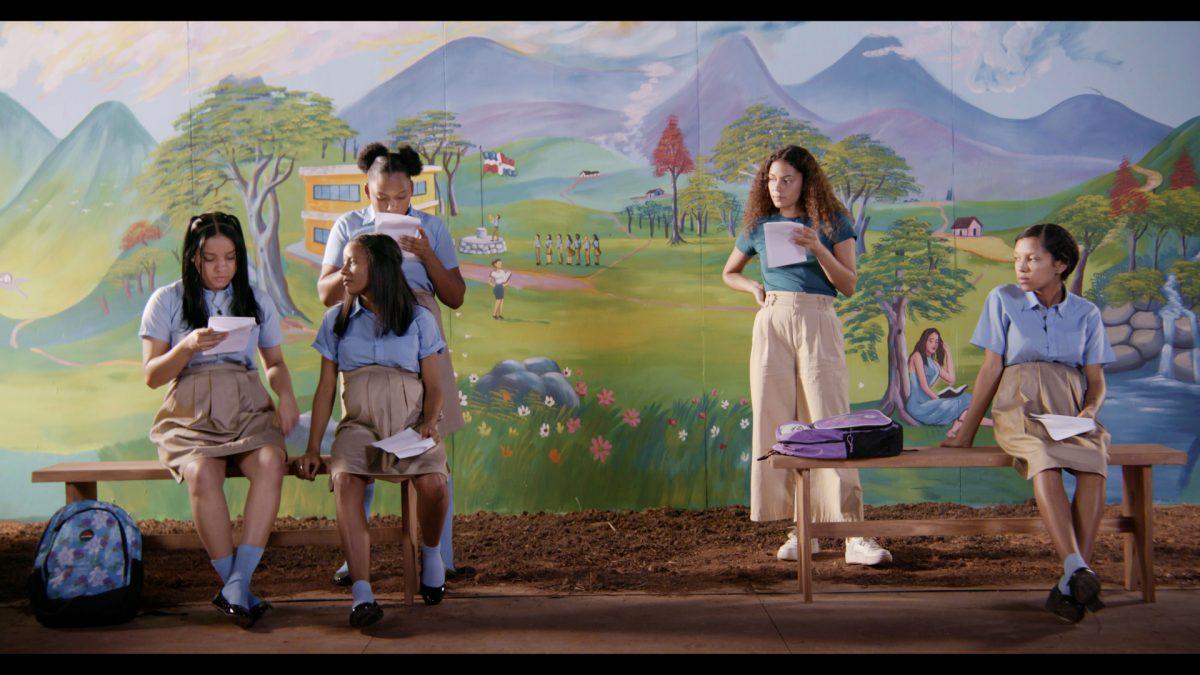
Directed by Victoria Linares Villegas, the film blurred the boundaries of storytelling in its radical pursuit of the truth behind the limitations of film.
Casting director and lead Camila Santana told the audience at the end of the 4:30 p.m. showing of “Ramona” at Ragtag Cinema that this film is the only way the story of Ramona should have happened.
What was once a fictional film about a pregnant girl running away from home to become an actress shifts into an examination of the lives of the girls that director Victoria Linares Villegas and Santana interviewed in preparation for the film.
“Ramona” begins with a sequence of long shots — sounds of a set being constructed overlaid on the bright pastels of a dressing room. Santana, the actress cast to play Ramona, expresses her desire to talk with teenage girls who are actually experiencing pregnancy, wanting her character to portray reality. Villegas, the actual and canonical director, agrees, and they set off to find interviewees.
From then on, the audience meets several pregnant girls who live in the Dominican Republic, an area where 20.5% of women between 15-19 years have experienced teen pregnancy. The audience quickly learns why teen pregnancy is prominent after meeting the girls — men often lure girls with alcohol and drugs, have sex with them and are never seen again. This problem can be inescapable, and the girls are given no other option but to go through with their pregnancy.
Most of the interviewees acknowledged that they did not feel like a mother. Some admitted they still played with their toys from childhood. One interviewee said, “Soy una niña con un niño,” or “I’m a child with a child.” Through the process of not only interviewing but spending time with some of these girls, Santana, an outsider, questions her role as Ramona and whether or not she fits into the story.
A scene of Santana practicing lines in the mirror with the prosthetic belly captures the existential dread she feels. Santana begins to realize there is only so much she can pretend to experience and only so much an actress can convey.
“Ramona” presents complex questions regarding the culture and attitudes surrounding pregnant girls in the Dominican Republic. Still, it shares joyful moments of the girls spending time with one another, discussing their struggles, celebrating a birthday and going for a swim in a river nearby. The film ends with a sequence of the original plot of “Ramona,” but Santana is nowhere in the scene — the interviewed girls play Ramona instead, with cuts that include each girl acting out a scene. Villegas said this was not a film just about the struggles of teen pregnancy — it was about the small joys of girlhood and connection.
What starts as a narrative of isolation evolves into a story about female connection and how a community can rally strength for those who experience adversity.
“Ramona” explores the harsh, complex perspective of being a child with a child. It triumphantly conveys the reality of the pressures of motherhood at the vulnerable stage of adolescence with the beauty of female friendship, successfully “merging the hopes and the dreams of the girls interviewed,” as Vigellas said.
Villegas told a unique story of girlhood in the Dominican Republic by blending nonfiction with fiction, and she executes it beautifully, showing that even in the darkest of times, women can find solace in one another.
Edited by Scout Hudson | [email protected]
Copy edited by Grace Knight